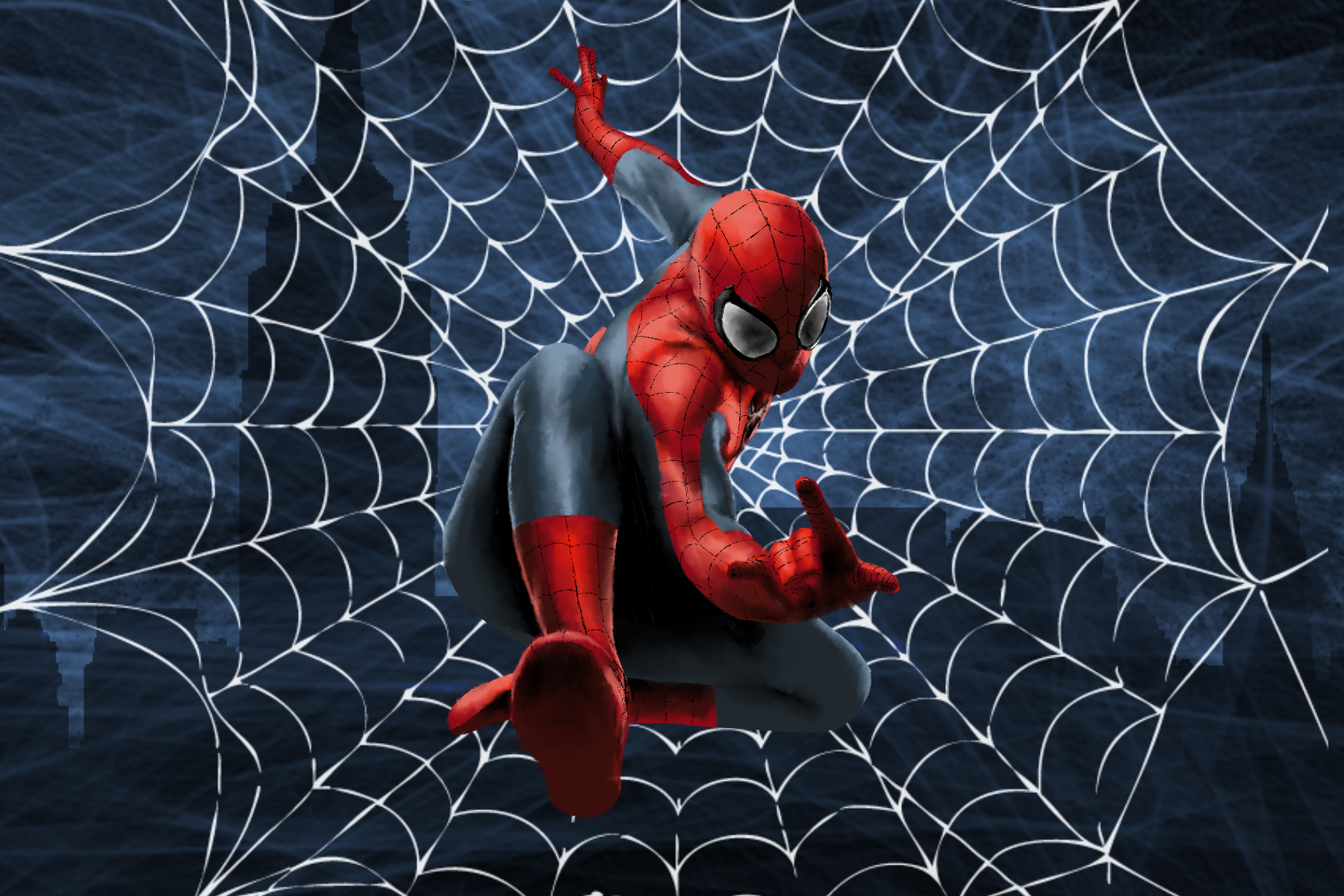Sam Raimi’s “Spider-Man” trilogy is easily one of the best-known incarnations of the iconic Marvel hero. It introduced a generation to the web-slinger and is considered by many to be the most comic-accurate version. What really makes the trilogy such a memorable experience is how many of the characters and themes presented in the first movie are built upon in the two sequels that followed.
With Great Power Comes Great Responsibility
Few incarnations of Spider-Man follow this principle quite as well as Sam Raimi’s version. It should be noted that Tobey Maguire’s Spider-Man holds a major advantage over many other incarnations of the superhero: His webbing is organic and unlimited. Most other Spider-Men rely on web-shooters for their web-slinging abilities. The most notable exceptions are Spider-Man 2099 and Noir, who also possess organic webbing. While this makes Maguire’s Spider-Man more powerful than many other versions, he also feels the burden of responsibility more.
Uncle Ben
Uncle Ben’s murder is the driving force behind the events of the first movie, as well as other events in the sequels. After Peter lets a robber get away, the same man shoots and kills his Uncle Ben. Peter blames himself for not stopping the robber when he had the chance. This event is what drives Peter to use his abilities to fight crime throughout New York City as Spider-Man.
Revenge/Guilt
Revenge is a critical theme in the trilogy. In the first movie, Norman Osborn decides to use the technology he developed at his company, Oscorp, to become the Green Goblin. He wants to kill his board of directors who planned to sell the company out from under him. This event also begins the conflict between Spider-Man and the Green Goblin. It ends in Norman’s death when he tries to impale Spider-Man with his glider and kills himself by mistake.
Norman’s son, Harry, who is also Peter’s best friend, believes that Spider-Man killed his father after he sees the superhero with his father’s body. Harry swears vengeance on Spider-Man, which pushes his friendship with Peter to its breaking point throughout the trilogy. In “Spider-Man 2,” Harry believes that Peter is profiting off his father’s death by taking pictures of Spider-Man for the Daily Bugle. By the end of the second movie, Harry learns not only that Peter is Spider-Man, but that his father was the Green Goblin. He uses his father’s goblin tech in the third movie to fight Spider-Man as the New Goblin to get revenge for his father’s death. Eventually, Harry learns the truth and saves Peter’s life at the cost of his own.
Peter feels guilt for Uncle Ben’s death which, in “Spider-Man 2,” causes him to reveal to his Aunt May that he could have stopped the robber but didn’t. Revenge is also the catalyst for Peter’s dark side that comes to light in “Spider-Man 3.” In the third movie, Peter learns that the robber did not kill his Uncle Ben and the real killer is Flint Marko, the Sandman. This also gives Peter subconscious guilt because he watched the robber trip and fall to his death. This is evidenced by Peter having two flashbacks about the death of the robber: First when he finds out who the real killer is, and again when he has a violent nightmare where he relives the robber’s death.
Venom also embodies revenge in “Spider-Man 3,” not just because of the symbiote, but because of its new host, Eddie Brock. Eddie fakes a picture of Spider-Man robbing a bank for the Bugle and Peter subsequently rats him out. This results in Eddie losing his job and being humiliated by a retraction in which the paper labels him a faker. This almost costs Peter his life when Venom and Sandman work together to exact their revenge on Spider-Man by trying to kill him and Mary Jane. Spider-Man has plenty of other haters besides his enemies, however.
“Eventually They Will Hate You”
Back in the first movie, the Green Goblin conveys an interesting message to Spider-Man when he tries to convince the hero to join him: “In spite of everything you’ve done for them, eventually they will hate you.”
This line is easily overlooked, but it holds a surprising amount of truth throughout the trilogy. By that point, Spider-Man has stopped quite a few crimes and saved quite a few people, but the city still rejected him. Later, the Bugle publishes an article that says the people wanted Spider-Man behind bars. Of course, no one wants that more than Peter’s boss, J. Jonah Jameson. Still, Spider-Man stops the Goblin from choking Jameson and his first response is to say that he knew Spider-Man and the Goblin were working together. This sows doubt in Peter’s decision to be a hero, which reaches a boiling point in “Spider-Man 2.”
Two years have passed since the events of the first movie and the Bugle publishes more than its share of papers labeling Spider-Man a menace. By the time Doc Ock emerges, the Bugle has published yet another article claiming that Spider-Man worked with Doc Ock to rob a bank, when in reality, Spider-Man had been trying to stop the heist. This is one of the causes for Peter temporarily giving up being Spider-Man.
This message continues in “Spider-Man 3” when a group of people reading Brock’s fake article believe that Spider-Man did rob that bank, even after the city had finally hailed him as the hero he was and gave him the key to the city. Despite all of Spider-Man’s heroics, the city still turns against him at every chance.
Forgiveness and Sacrifice
However, the “Spider-Man” trilogy shows that being a hero often requires sacrifice, which ties back into responsibility. At the end of the first movie, Mary Jane expresses her love to Peter and he rejects her to keep her safe from future enemies. Their relationship doesn’t get any better by the second movie when Peter has to miss her play to stop a heist, although she does forgive him after he makes it to another play, and more so once Mary Jane discovers Peter is Spider-Man. Despite this, Peter encourages MJ to marry Jameson’s son so she can be safe. Peter is willing to sacrifice a future with the woman he loves to continue saving people as Spider-Man.
Forgiveness and sacrifice continue in “Spider-Man 3.” Peter and Mary Jane’s relationship is somewhat unstable. Peter is somewhat self-absorbed now that New York finally sees him as a hero, so he’s not there for Mary Jane, who is struggling with her acting career. Peter’s responsibility to the people as Spider-Man makes him even more distant.
Things get worse after MJ is fired from her Broadway show and she applies to sing at a jazz club. Because Peter isn’t around, she visits Harry and kisses him, which she immediately regrets. Peter screws up too when he kisses Gwen Stacy as Spider-Man during the city’s celebration for him. Later, Peter dances with Gwen at the jazz club and ends up hitting MJ in a blind rage after a fight breaks. Peter realizes that the black suit has been influencing him and he gets rid of it. Peter sacrifices the symbiote’s power so he can be himself again.
Although Peter had disfigured half of Harry’s face by redirecting a pumpkin bomb at him during a fight they had earlier, Harry forgives Peter and they work together to save Mary Jane and stop Sandman and Venom. When Venom is about to impale Peter with the glider, Harry takes it and sacrifices himself to save his friend. Peter also forgives Sandman after learning that he shot Uncle Ben by accident after his partner who robbed the wrestling place surprised him and that he wanted the money in the first place to save his dying daughter. Harry reconciles with his friends and dies in their arms a hero. The last scene of the trilogy shows Peter and MJ showing an unspoken forgiveness for everything the other has done as Mary Jane takes Peter’s hand and dances with him.
Sam Raimi’s “Spider-Man” trilogy does an excellent job establishing themes and building upon them through each movie. Many of the themes connect to each other and are executed not just through the plot but through the characters. The trilogy set the standard for what live-action Spider-Man adaptations should be and for many, the films are timeless. While it’s not perfect, the story the trilogy tells is compelling, connected, and above all, human.
















